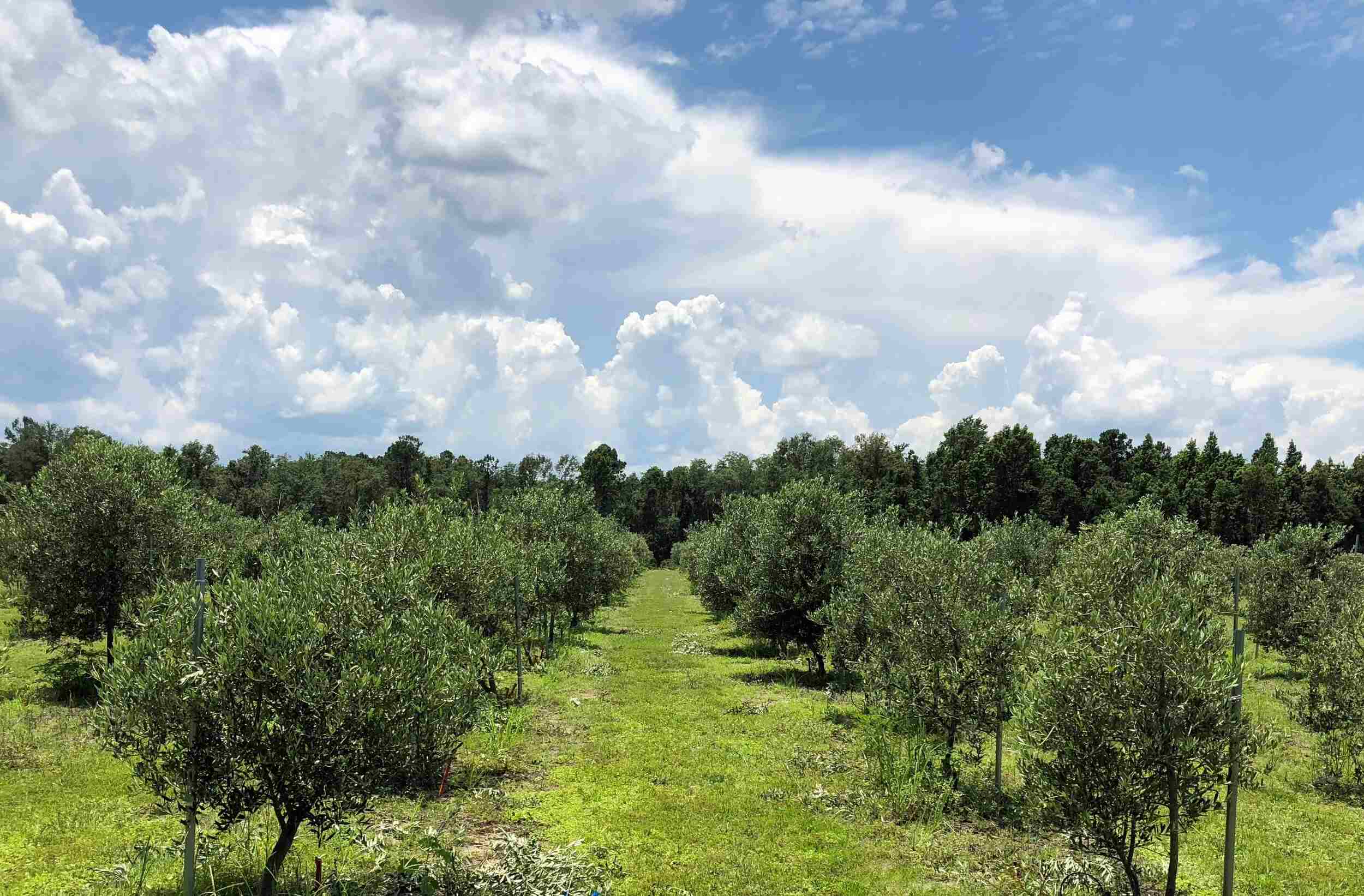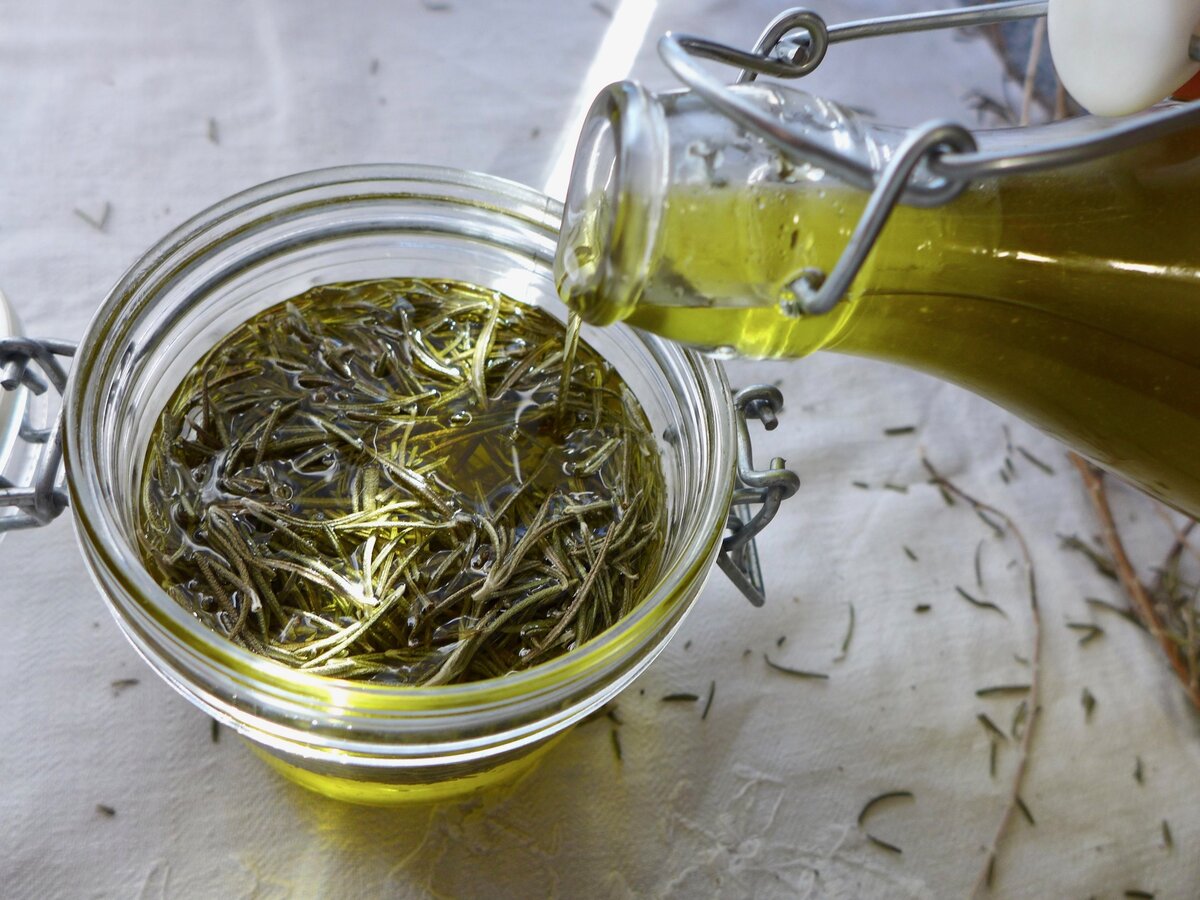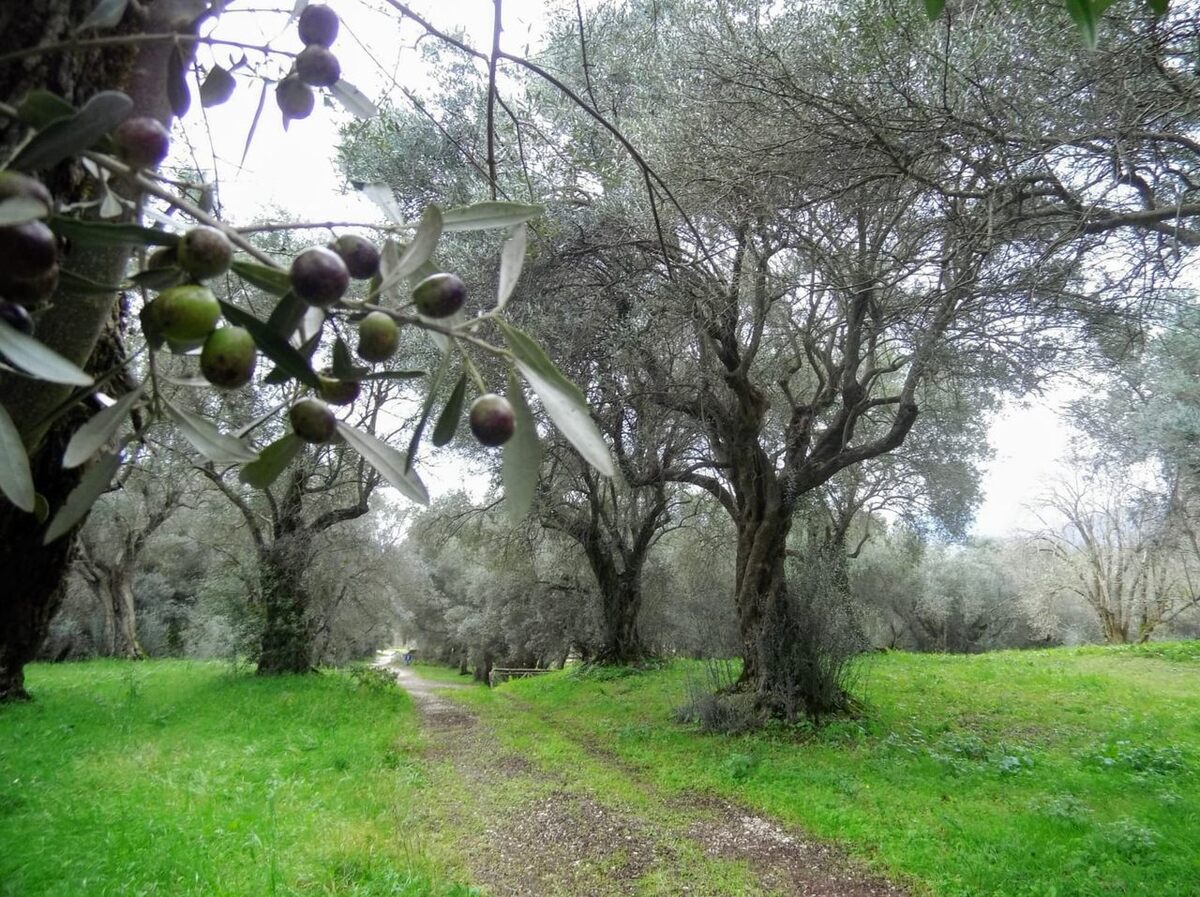Home>Gardening News and Trends>Latest News>What Orchard Layout Is Recommended For Planting An Olive Orchard In Louisiana


Latest News
What Orchard Layout Is Recommended For Planting An Olive Orchard In Louisiana
Published: September 3, 2023
Looking for the latest news on planting an olive orchard in Louisiana? Discover the recommended orchard layout for successful cultivation.
(Many of the links in this article redirect to a specific reviewed product. Your purchase of these products through affiliate links helps to generate commission for Chicagolandgardening.com, at no extra cost. Learn more)
Table of Contents
Introduction
Welcome to the fascinating world of olive orchards in Louisiana! As the popularity of olives and olive oil grows, more and more farmers and enthusiasts are considering planting their own olive trees. The mild climate and fertile soil of Louisiana create a favorable environment for cultivating this Mediterranean crop.
However, before embarking on the journey of establishing an olive orchard in Louisiana, it is crucial to understand the key factors that need to be considered. From choosing the right olive cultivars to determining the most suitable orchard layout, thorough planning is essential to ensure the success of your olive venture.
With that in mind, this article aims to provide you with valuable insights into the recommended orchard layout for planting olive trees in Louisiana. By understanding the benefits, challenges, and specific considerations of this layout, you will be well-equipped to make informed decisions and set your olive orchard up for long-term success.
So, let’s delve into the world of olive orchard planning and explore the factors to consider when establishing an olive orchard in Louisiana.
Factors to Consider When Planning an Olive Orchard in Louisiana
The successful cultivation of olive trees in Louisiana depends on several crucial factors that need to be taken into consideration during the planning process. Understanding these factors will help you make informed decisions and optimize the growth and productivity of your olive orchard. Here are the key factors to consider:
- Climate: Louisiana’s climate is generally humid and characterized by mild winters and hot, humid summers. Olive trees prefer a Mediterranean climate with mild, rainy winters and hot, dry summers. Therefore, it is important to select olive cultivars that are suitable for warmer climates and can tolerate Louisiana’s specific climatic conditions.
- Soil: Olive trees thrive in well-drained soil with optimal pH levels ranging from 6 to 8. Before planting your orchard, it is essential to perform a soil analysis to determine the soil’s nutrient composition, pH level, and overall suitability for olive cultivation. Amendments may be required to optimize the soil conditions for the olive trees.
- Water: Olive trees have moderate water requirements and are relatively drought-tolerant once established. However, during the first few years after planting, sufficient irrigation is essential to aid in the tree’s establishment and promote healthy growth. Adequate water availability is crucial, so access to a reliable irrigation system or a water source should be considered.
- Sunlight: Olive trees thrive in full sunlight exposure, typically requiring a minimum of six to eight hours of direct sunlight per day. When selecting the orchard location, ensure that the chosen site receives ample sunlight throughout the day and is not shaded by buildings, trees, or other structures.
- Pest and Disease Management: Like any crop, olive trees are susceptible to pests and diseases. Research and implement effective pest management strategies to protect your olive orchard from common pests such as olive fruit fly, scale insects, and bacterial diseases. Regular monitoring and proactive measures can help prevent or mitigate potential pest and disease outbreaks.
- Olive Cultivar Selection: There are numerous olive cultivars available, each with its own characteristics, including flavor profile, fruit size, oil quality, and cold-hardiness. Select cultivars that are well-suited for Louisiana’s climate and meet your specific objectives. Consult with local agricultural experts or olive growers to determine the most suitable cultivars for your orchard.
By carefully considering these factors and tailoring them to your specific location and objectives, you can lay a strong foundation for a thriving olive orchard in Louisiana.
Recommended Orchard Layout for Olive Trees in Louisiana
When it comes to planning the layout of your olive orchard in Louisiana, there are several options to consider. However, one layout that is recommended for maximizing tree health, sunlight exposure, and ease of maintenance is the “hedgerow” or “two-axis” system.
The hedgerow layout involves planting olive trees in a straight row formation, similar to a hedge. The trees are spaced equidistant from each other, ensuring optimal sunlight penetration and airflow throughout the orchard. This layout allows for efficient management, harvesting, and maintenance activities.
The following features make the hedgerow orchard layout highly advantageous for olive cultivation in Louisiana:
- Maximized Sunlight Exposure: In a hedgerow layout, the trees are arranged in lines that run perpendicular to the path of the sun, ensuring that each tree receives maximum sunlight exposure. By optimizing sunlight absorption, the trees can generate more energy through photosynthesis, resulting in healthier and more productive olive trees.
- Improved Air Circulation: The straight row formation of the hedgerow layout allows for better airflow between the trees, minimizing the risk of disease development. Good air circulation helps prevent the buildup of humidity, which can lead to fungal infections and other diseases that thrive in moist environments.
- Easier Management and Harvesting: The uniform spacing and straight rows of the hedgerow layout make management tasks, such as pruning, irrigation, and pest control, more straightforward and efficient. Additionally, harvesting becomes easier as all the trees are in a straight line, allowing for streamlined picking and collection of the ripe olives.
- Flexibility and Adaptability: The hedgerow layout provides flexibility in terms of orchard size and expansion. It can be easily adjusted to accommodate the specific needs of your olive cultivars, allowing you to maximize tree density within the available space and adapt to future growth and changes in the orchard.
It is important to ensure proper spacing between the trees in a hedgerow layout. This spacing depends on various factors, including the olive cultivar, soil fertility, and desired tree density. Consult with local experts or agricultural extension services to determine the optimal spacing for your specific orchard.
Overall, the recommended hedgerow orchard layout offers numerous benefits and is a popular choice for olive cultivation in Louisiana. It optimizes sunlight exposure, enhances air circulation, facilitates management tasks, and allows for future adaptability and expansion of your olive orchard.
Benefits of the Recommended Orchard Layout
The recommended hedgerow orchard layout for planting olive trees in Louisiana offers several benefits that contribute to the overall success and productivity of your olive orchard. Let’s explore some of these advantages:
- Optimized Productivity: The hedgerow layout allows for maximum sunlight exposure, which is essential for the growth and productivity of olive trees. More sunlight means enhanced photosynthesis, resulting in increased fruit production and better oil quality. The uniform spacing also ensures that each tree receives an equal share of sunlight, minimizing shading and promoting uniform growth across the orchard.
- Improved Air Circulation: With trees arranged in straight rows, the hedgerow layout facilitates better airflow within the orchard. This reduces the risk of excessive humidity and improves disease prevention. Adequate air circulation helps keep the trees healthy, preventing the development and spread of fungal infections and other diseases that thrive in moist conditions.
- Efficient Management and Maintenance: The straight rows of the hedgerow layout make management tasks more efficient. Pruning, irrigation, fertilization, and pest control activities become easier and more streamlined. Additionally, maintenance equipment can navigate the orchard with ease, improving accessibility and reducing the effort and time required for routine orchard care.
- Easier Harvesting: The hedgerow layout simplifies the harvesting process. The straight rows allow for easy access to every tree, making it convenient to pick and collect the ripe olives. This layout is particularly beneficial if you plan to mechanically harvest your olive crop, as the trees’ alignment ensures a smooth and efficient harvesting operation.
- Scalability and Adaptability: The hedgerow layout is highly flexible and adaptable to different orchard sizes and expansion plans. As your olive orchard grows, you can easily extend the rows by adding more trees without disrupting the overall layout. This scalability allows you to gradually increase the tree density and optimize the use of available space, maximizing the production potential of your orchard.
By implementing the recommended hedgerow orchard layout, you can harness these advantages to create a thriving and efficient olive orchard in Louisiana. The layout promotes tree health and vigor, enhances productivity, simplifies maintenance, and provides the flexibility for future expansion.
Challenges and Considerations of the Recommended Orchard Layout
While the recommended hedgerow orchard layout offers numerous benefits for olive cultivation in Louisiana, it is essential to be aware of potential challenges and considerations associated with this design. Understanding these factors will help you make informed decisions and effectively manage your olive orchard. Here are some key challenges and considerations to keep in mind:
- Initial Investment and Labor: Implementing the hedgerow orchard layout requires an initial investment in preparing the site and planting the trees in a straight row formation. The labor involved in setting up the proper infrastructure, including trellising or support systems, can be significant. However, this investment can be worthwhile in terms of long-term benefits and improved efficiency during orchard management and harvesting.
- Maintenance and Pruning: The hedgerow layout necessitates regular and consistent pruning to maintain the shape and structure of the trees. Proper pruning is crucial for airflow and sunlight penetration. It’s essential to educate yourself on proper pruning techniques and invest time and effort into this maintenance aspect.
- Disease Management: While the hedgerow layout promotes air circulation and reduces disease risk, it is still important to implement effective disease management strategies. Regular scouting for pests and diseases, timely intervention, and appropriate fungicide applications are necessary to keep your olive orchard healthy and productive.
- Tree Access and Canopy Management: The straight row formation of the hedgerow layout can make it challenging to access the inner part of the tree canopy for maintenance tasks. Careful consideration should be given to equipment maneuverability and access during pruning, netting, and other activities that require proximity to the trees.
- Tree Spacing and Tree Density: Determining the appropriate tree spacing and tree density within the hedgerow layout is critical. Inadequate spacing can lead to overcrowding and competition for resources, while excessive spacing can reduce the efficiency of land use. Consulting with experts or experienced olive growers can provide valuable guidance in determining optimal spacing and density that suits your specific olive cultivar and soil conditions.
Although the recommended hedgerow orchard layout presents some challenges and considerations, with proper planning and management, these hurdles can be effectively overcome. By staying proactive in disease management, investing in pruning and ensuring access to the tree canopy, you can optimize the benefits of this layout and achieve a successful olive orchard in Louisiana.
Conclusion
Establishing an olive orchard in Louisiana can be a rewarding endeavor, and careful planning is essential for long-term success. By considering factors such as climate, soil conditions, and cultivar selection, you can set a strong foundation for your olive orchard. Additionally, implementing the recommended hedgerow orchard layout offers a range of benefits, including enhanced productivity, improved airflow, and efficient management and harvesting.
While challenges like initial investment, maintenance, and disease management may accompany the recommended layout, they can be effectively managed with proper planning and proactive strategies. Ensuring proper tree spacing, investing in pruning, and implementing disease control measures will help mitigate these challenges and optimize the health and productivity of your olive orchard.
Seeking guidance from local experts, agricultural extension services, or experienced olive growers in Louisiana is invaluable throughout the planning and implementation process. Their knowledge and expertise can provide valuable insights specific to the region, ensuring that your olive orchard thrives in the Louisiana climate.
With proper consideration of these factors and implementation of the recommended orchard layout, you will be well on your way to enjoying a thriving and fruitful olive orchard in Louisiana. Whether you plan to produce olives for consumption, olive oil production, or simply enjoy the beauty of an olive grove, the efforts and investments made in planning and designing your orchard will pay off in the long run.
So, roll up your sleeves, prepare your soil, select the appropriate olive cultivars, and embrace the journey of establishing your own olive orchard in Louisiana. Embrace the Mediterranean spirit in the heart of the deep South, and enjoy the satisfying rewards that come from nurturing and cultivating these prized trees.










